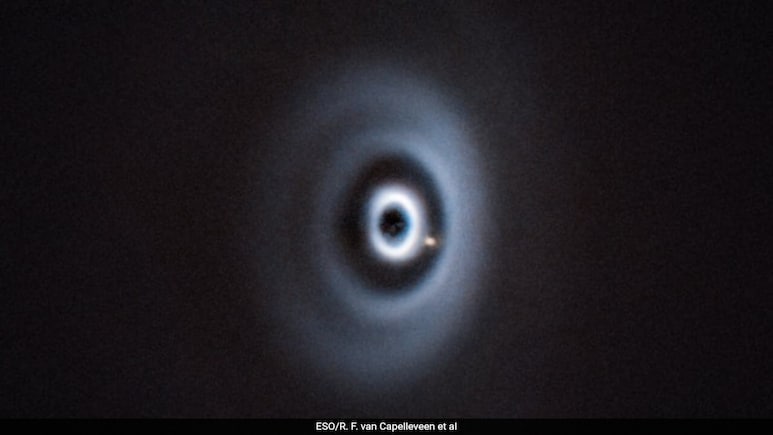
Astronomers have made a historic discovery, capturing the first image of an exoplanet actively carving a bright gap in the dusty disk around its young star. This rare observation, led by Leiden PhD candidate Richelle van Capelleveen, provides crucial new insights into how planets form and influence their surroundings.
While hundreds of images of planet-forming disks have been captured in recent years, many showing rings and spiral arms, very few have ever shown the planet responsible for these structures. The last confirmed sighting of a similar "embedded" planet was the PDS 70 system in 2018.
Watch the video here:
After a seven-year search, the research team, part of a program called 'WIde Separation Planets In Time' (WISPIT), located the new system using the SPHERE instrument on the European Southern Observatory's (ESO) Very Large Telescope in Chile. The newly found planet, named WISPIT 2b, is the first of its kind to be observed shaping its environment, confirming long-held theories about how planets influence their stellar nurseries.
Lead author of the study Richelle van Capelleveen said, "Discovering this planet was an amazing experience - we were incredibly lucky. WISPIT 2, a young version of our Sun, sits in a little-studied group of young stars, and we didn't expect to find such a spectacular system. I'm very grateful to our international partners for all their work, especially the group of students from the University of Galway in Ireland who really helped us share this discovery with the community in record time."
Van Capelleveen's supervisor and third author, Matthew Kenworthy (Leiden University), explains, "What we present here is the first clear detection of an embedded planet since PDS 70 seven years ago. It's also the first detection of such a planet in a cleared gap."
Second author Christian Ginski (University of Galway, Ireland) adds, "This is strong direct evidence that the gas giants we've found on wide orbits around slightly older stars could indeed have formed far from their parent star - exactly where we see them now."
The team expects this system to have a major impact on the planet-formation community and to serve as a benchmark for models of planet formation and disc-planet interactions for years to come.
Track Latest News Live on NDTV.com and get news updates from India and around the world

